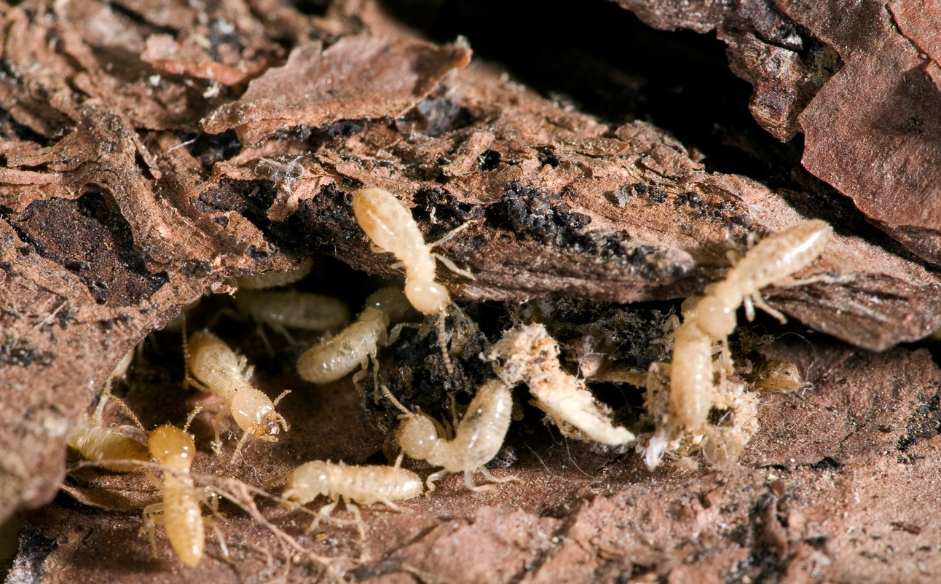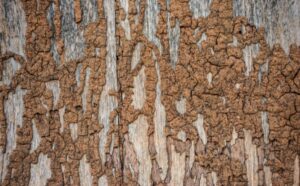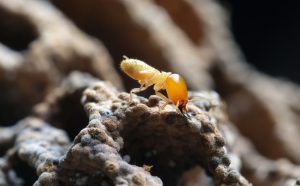Termites are small insects that feed on wood and other plant materials, causing damage to homes and structures. Weather has a significant impact on termite activity, as these creatures rely heavily on moisture and temperature for survival.
Today, we will discuss how weather affects termite activity and what homeowners should know to protect their homes from termite infestations.
How Weather & Termites Are Closely Linked
Weather either creates ideal or hostile conditions for termite activity. Termites require a specific level of humidity and temperature to survive and thrive. Any significant changes in these conditions can significantly impact their behaviour.
For example, warm and humid climates are ideal for termites, as they provide the moisture and warmth that these insects need to survive. On the other hand, dry or cold weather can slow down termite activity or cause them to seek shelter indoors.
Why Termites React To Weather Conditions
Termites have evolved to be highly sensitive to changes in weather conditions, and this is because they are dependent on their environment for survival. They rely on the moisture in the soil to keep their bodies hydrated and for maintaining the integrity of their nest.
In addition, termites are ectothermic insects, meaning they cannot regulate their own body temperature and instead rely on external sources to keep them warm.
How Specific Weather Condition Impacts Termites?
Different weather conditions can have varying impacts on termites, affecting their behaviour and survival in different ways. Let’s take a closer look at some specific weather conditions and how they affect termites.
Warm Weather
As mentioned, termites are most active during the warmer months. This is because they thrive in warm and humid environments.
In fact, the ideal temperature for termite activity is between 24-35 degrees Celsius. During this time, termites will swarm and reproduce, creating new colonies and expanding their territory.
Termites are more active in warm weather, but they can still damage homes in colder months. Warm areas like water pipes or heating systems create inviting spots for termites to keep feeding on wood and causing damage.
Rainy Weather
Heavy rainfall can be beneficial for termites, as it helps to keep the soil moist, which is essential for their survival.
However, constant rain over a long period of time can also flood termite colonies, causing them to evacuate or even drown. This is especially true for subterranean termites that build their nests underground.
Termites are also known to swarm after heavy rains, as the moisture in the air triggers their reproductive cycles. This can lead to an increase in termite activity and potential infestations.
Dry Weather
In dry weather conditions, termites may struggle to find enough moisture to survive. This can lead them to seek out other sources of water, such as leaking pipes or condensation from air conditioning units. These areas should be regularly checked and repaired to prevent termite infestations.
Additionally, dry weather can also cause cracks in the soil surrounding a home’s foundation, providing an easy entry point for termites. Homeowners should regularly inspect their foundation and fill in any cracks to prevent termite access.
Cold Weather
While termite infestations are more common in warmer climates, cold weather can also play a role in their behaviour. In colder temperatures, termites may burrow deeper into the ground to keep warm, making it difficult for traditional pest control methods to reach them.
Furthermore, during the winter months, termites are less active and tend to slow down their feeding habits. This can give homeowners a false sense of security, as they may believe that the termites have left or died off.
However, once spring arrives and temperatures rise again, these termites will become active once more and continue causing damage to homes.
How Climate Change Is Shifting Termite Patterns
With climate change on the rise, researchers have noticed shifts in termite patterns. As temperatures increase, termites are able to survive in areas that were previously too cold for them. This means that they are expanding their habitats and becoming a threat to new areas.
In addition, warmer temperatures also mean longer breeding seasons for termites. This allows them to reproduce at a faster rate and potentially cause more damage to homes.
Moreover, changes in rainfall patterns due to climate change can also affect termite behaviour. Termites thrive in moist environments and may migrate towards areas with increased rainfall or moisture levels.
Preventing Termite Infestations in a Changing Climate
To prevent termite infestations and damage to homes, it is important to take proactive measures. With the changing climate, traditional methods of termite control may no longer be effective. Here are some tips to protect your home from termites in a changing climate:
- Keep moisture levels low: Termites thrive in moisture, so keeping your home dry is key to preventing infestations. Ensure proper ventilation, fix leaks and drainage, and keep plants away from your home’s foundation.
- Regularly inspect for termite activity: Regular termite inspections by a professional pest control company are recommended. They can spot signs of termites and take steps to prevent or treat infestations.
- Use alternative methods of termite control: With changing climate patterns, traditional termite control methods like chemical treatments may lose effectiveness. Try eco-friendly alternatives like bait systems or nematodes, which can work just as well.
- Keep your home well-ventilated: Termites love dark, damp spaces, so keep your home well-ventilated. This makes it less appealing to termites and helps prevent other pests.
Takeaway
Weather and climate can have a significant impact on termite activity and infestations. By understanding the behaviour of termites in different climates, homeowners can take proactive measures to protect their homes from these destructive pests.
Make sure to contact a professional termites removal service if you suspect an infestation in your home. They will have the expertise and tools necessary to effectively eliminate termites and prevent future infestations.




